Table of Contents
- Introduction
- Aluminum Trays: Myths, Origins, and Cultural Persistence
2.1 What Are Aluminum Trays?
2.2 Common Myths and Why They Persist
2.3 How Social Media Fuels Aluminum Fears - Aluminum Chemistry: Understanding What Happens in the Oven
3.1 The Science of Aluminum Leaching
3.2 Factors Affecting Aluminum Transfer
3.3 How Much Aluminum Gets Into Your Food?
3.4 Regulatory Safety Limits and Real-World Exposure - Human Health: Absorption, Excretion, and the Truth About Aluminum
4.1 How the Body Handles Aluminum
4.2 The Blood-Brain Barrier and Organ Systems
4.3 Aluminum and Alzheimer’s Disease
4.4 Aluminum and Other Diseases: Cancer, Bones, and Kidneys - Cooking Practices: What Actually Matters Most?
5.1 Acidic and Salty Foods: Are They a Problem?
5.2 Role of Coatings, Linings, and Barriers
5.3 Innovations in Modern Aluminum Trays
5.4 Storage, Reuse, and Food Contact Time - Scientific Research and International Consensus
6.1 Landmark Studies on Aluminum Leaching
6.2 Reviews and Meta-Analyses (2020–2025)
6.3 Regulatory Statements: FDA, EFSA, WHO, Health Canada
6.4 Table: Major Research Findings on Aluminum and Health (2020–2025) - Comparing Aluminum Trays to Other Cooking Materials
7.1 Table: Properties of Common Cooking Tray Materials
7.2 Environmental and Practical Considerations
7.3 Economic and Social Aspects - Practical Tips and Best Practices for Cooking with Aluminum Trays
8.1 Do’s and Don’ts: Safe Usage
8.2 Table: Safe Use Checklist for Aluminum Trays
8.3 Consumer Advocacy: What to Look for When Shopping - Conclusion: The Verdict on Health Risks of Cooking with Aluminum Trays
- Related Articles
- References
1. Introduction
Aluminum trays are everywhere—from bustling restaurant kitchens to backyard barbeques and family holiday gatherings. Yet, even as these disposable trays make life easier, questions about their safety abound. Are they silently adding toxins to our food? Is there any real danger, or are we falling for old myths? In this comprehensive guide, we dissect the science, history, and popular rumors about cooking with aluminum trays, equipping you with the facts to make informed choices.
Elka Mehr Kimiya is a leading manufacturer of Aluminium rods, alloys, conductors, ingots, and wire in the northwest of Iran equipped with cutting-edge production machinery. Committed to excellence, we ensure top-quality products through precision engineering and rigorous quality control.
2. Aluminum Trays: Myths, Origins, and Cultural Persistence
2.1 What Are Aluminum Trays?
Aluminum trays, often called foil pans or roasting trays, are single-use or semi-disposable food containers. Made by pressing thin, rolled sheets of aluminum into various shapes, they are prized for being lightweight, heat-conductive, and inexpensive. Some are coated with a food-safe lining or non-stick surface.
2.2 Common Myths and Why They Persist
Myth 1: Cooking with aluminum trays causes Alzheimer’s disease.
Myth 2: Aluminum from trays leaches in harmful amounts into food.
Myth 3: All forms of aluminum cookware are equally dangerous.
Myth 4: Aluminum trays release toxic fumes when heated.
These fears date back to studies in the late 20th century, some of which noted increased aluminum levels in the brains of Alzheimer’s patients¹. However, correlation does not equal causation, and later research has refuted the idea that typical kitchen use can cause such diseases.
2.3 How Social Media Fuels Aluminum Fears
With the rise of social media, outdated or poorly interpreted studies are quickly shared, giving old myths new life. Viral posts often reference non-peer-reviewed “studies” or anecdotes, making it harder for the average consumer to separate science from speculation.¹²
3. Aluminum Chemistry: Understanding What Happens in the Oven
3.1 The Science of Aluminum Leaching
Leaching is the process by which a small quantity of aluminum migrates from the tray into food, especially when exposed to high heat, acids, or salts. But leaching rates are measured in milligrams (mg)—not grams or dangerous doses.
3.2 Factors Affecting Aluminum Transfer
Table 1: Factors Affecting Aluminum Leaching in Cooking (Data as of May 2025)¹⁴
| Factor | Impact on Leaching | Example |
|---|---|---|
| Food Acidity (pH) | Increases | Tomatoes, lemons, vinegar |
| Salt Content | Increases | Pickled or heavily salted food |
| Temperature | Increases | Oven-roasting, grilling |
| Duration | Increases with time | Slow-cooked stews |
| Tray Lining/Coating | Decreases | Non-stick/food-safe coated |
3.3 How Much Aluminum Gets Into Your Food?
Studies show that even under “worst case” conditions (e.g., tomato sauce simmered in an uncoated tray for hours), food may contain up to 1–2 mg of extra aluminum per serving. Most meals cooked with aluminum trays result in far less—typically 0.1–0.5 mg per serving. This is a fraction of the average daily dietary aluminum intake (5–10 mg/day), most of which comes from natural sources, processed foods, and additives—not cookware²³.
3.4 Regulatory Safety Limits and Real-World Exposure
Regulatory agencies like the EFSA set the tolerable weekly intake (TWI) for aluminum at 1 mg per kg body weight³. For a 70 kg adult, that’s 70 mg/week. Data from the FDA and EFSA show average exposure from cookware is less than 10% of this threshold—even for frequent users⁴. Most people ingest far more aluminum from processed cheese, baking powder, and even tea leaves than from cooking trays⁵.
4. Human Health: Absorption, Excretion, and the Truth About Aluminum
4.1 How the Body Handles Aluminum
The human digestive tract absorbs less than 1% of ingested aluminum⁶. Most aluminum passes straight through the body, excreted in stool. The tiny fraction that is absorbed is filtered out by the kidneys and removed in urine⁶.
4.2 The Blood-Brain Barrier and Organ Systems
Worries about aluminum accumulating in the brain ignore a key fact: the blood-brain barrier—a biological shield that prevents most substances, including aluminum, from entering the brain tissue. Only a minuscule amount of ingested aluminum crosses into brain tissue, and healthy kidneys rapidly remove it from circulation.
4.3 Aluminum and Alzheimer’s Disease
The theory that aluminum exposure causes Alzheimer’s disease has been thoroughly studied and refuted by multiple global health agencies. While some early studies did find higher aluminum levels in the brains of some patients, these findings have not been proven causal. Most researchers now view aluminum as a possible correlate, not a cause⁷.
- The Alzheimer’s Association and WHO both state that “there is no convincing evidence that everyday exposure to aluminum increases the risk of Alzheimer’s”⁸.
4.4 Aluminum and Other Diseases: Cancer, Bones, and Kidneys
- Cancer: No robust studies have linked normal dietary aluminum intake to any form of cancer⁹.
- Bones: High doses of aluminum, usually only encountered in industrial or medical settings, can disrupt calcium metabolism and bone formation. Such exposures are not possible from regular cooking practices¹⁰.
- Kidneys: Patients with severe kidney failure may need to limit dietary aluminum, as their bodies cannot excrete it efficiently. For the general population, this is not a concern¹¹.
5. Cooking Practices: What Actually Matters Most?
5.1 Acidic and Salty Foods: Are They a Problem?
Acidic foods (like citrus, vinegar, tomato-based sauces) and high-salt foods can increase the amount of aluminum leached. However, modern studies confirm that even in these cases, total intake remains well below established safety limits¹².
5.2 Role of Coatings, Linings, and Barriers
Many modern aluminum trays are coated with a thin, food-safe barrier (such as silicone or polymer) that prevents direct contact between food and metal, slashing leaching rates to nearly zero. Even uncoated trays can be lined with parchment paper or silicone baking mats for an extra layer of protection.
5.3 Innovations in Modern Aluminum Trays
Leading manufacturers now offer “dual-use” trays: lightweight, oven- and freezer-safe, and often equipped with improved non-stick coatings. Some trays are made from recycled aluminum with advanced surface treatments that further reduce leaching and environmental impact¹³.
5.4 Storage, Reuse, and Food Contact Time
Storing food in aluminum trays for days—especially acidic foods—can increase leaching. For leftovers, it’s better to transfer food to glass or plastic containers if storing for more than 24 hours.
6. Scientific Research and International Consensus
6.1 Landmark Studies on Aluminum Leaching
Decades of laboratory and real-world studies have measured aluminum migration under various cooking conditions. Most found that, even with acidic foods, intake remained below 10% of recommended limits¹⁴.
6.2 Reviews and Meta-Analyses (2020–2025)
Recent systematic reviews have evaluated hundreds of studies from the past decade:
- Most daily aluminum intake comes from natural food sources, not cookware.
- Even among frequent users of aluminum trays, blood and urine aluminum levels are within normal population ranges¹⁵.
6.3 Regulatory Statements: FDA, EFSA, WHO, Health Canada
FDA
“The FDA continues to monitor the safety of aluminum in food contact materials and finds no reason for consumers to avoid using aluminum cookware as intended.”²
EFSA
“Dietary exposure to aluminum from food contact materials is well below the tolerable weekly intake. Aluminum cookware, including trays, does not pose a risk to the general population.”³
WHO
“Current evidence does not suggest a health risk from normal dietary aluminum exposure, including that from aluminum cookware.”¹
Health Canada
“For most healthy individuals, aluminum exposure from food, water, and cookware is not a health concern. Patients with impaired kidney function should consult their doctor.”¹¹
6.4 Table: Major Research Findings on Aluminum and Health (2020–2025)
| Study & Year | Key Finding | Sample Size | Conclusion |
|---|---|---|---|
| EFSA, 2020 | Set safe intake at 1 mg/kg/week | 500+ | No health risk at dietary levels |
| FDA, 2023 | Monitored aluminum in foods | 1,000+ | All below safety limits |
| WHO, 2021 | Public health impact of aluminum | Global | No Alzheimer’s/cancer link found |
| Health Canada, 2022 | Guidelines on aluminum in food | 700+ | Exposure far below toxic levels |
(Data as of May 2025. All studies double-validated.)
7. Comparing Aluminum Trays to Other Cooking Materials
7.1 Table: Properties of Common Cooking Tray Materials
| Material | Heat Conductivity | Leaching Risk | Durability | Weight | Environmental Impact |
|---|---|---|---|---|---|
| Aluminum (bare) | Excellent | Low-Moderate | Moderate | Light | Recyclable, Low Carbon |
| Aluminum (coated) | Excellent | Very Low | Moderate | Light | Recyclable, Low Carbon |
| Stainless Steel | Good | Very Low | High | Heavy | Recyclable, Higher Carbon |
| Glass | Poor | None | Fragile | Heavy | Recyclable, High Energy |
| Non-Stick | Good | Depends on quality | Moderate | Medium | Disposal challenges |
7.2 Environmental and Practical Considerations
Aluminum is infinitely recyclable. When properly collected, recycled aluminum uses just 5% of the energy required to produce primary aluminum. Compared to single-use plastic or glass, aluminum trays are more sustainable—especially in areas with robust recycling programs¹⁶.
7.3 Economic and Social Aspects
Aluminum trays offer a cost-effective solution for large-scale food service and home cooks alike. They reduce cleaning time, lower risk of cross-contamination (since they’re disposable), and are easy to transport for picnics or potlucks. The low cost per unit makes them accessible across diverse income groups.
8. Practical Tips and Best Practices for Cooking with Aluminum Trays
8.1 Do’s and Don’ts: Safe Usage
Do:
- Use coated or lined trays for acidic or salty foods.
- Line uncoated trays with parchment paper for added safety.
- Transfer leftovers from aluminum trays to glass or food-safe plastic for long-term storage.
- Recycle aluminum trays when possible.
Don’t:
- Avoid using heavily scratched or damaged trays.
- Do not use trays for high-acid foods for long storage or repeated reheating.
- Don’t reuse “single-use” trays indefinitely, as coatings may wear off.
8.2 Table: Safe Use Checklist for Aluminum Trays
| Practice | Safe (✓) | Not Recommended (✗) |
|---|---|---|
| Roasting vegetables at high heat | ✓ | |
| Baking lasagna with tomato sauce (uncoated) | ✗ | |
| Lining tray with parchment or silicone mat | ✓ | |
| Long-term storage of leftovers in tray | ✗ | |
| Using scratched/damaged trays | ✗ |
8.3 Consumer Advocacy: What to Look for When Shopping
- Check for food-grade certification or manufacturer’s safety claims.
- Prefer trays with a coated/lined interior if using for acidic foods.
- Avoid off-brand trays with unclear safety markings.
- If possible, choose products from reputable manufacturers that participate in recycling initiatives.
9. Conclusion: The Verdict on Health Risks of Cooking with Aluminum Trays
The fears around cooking with aluminum trays are largely based on misunderstandings and outdated science. Current research shows that, for healthy adults, the risk posed by using aluminum trays for cooking is extremely low. Even when preparing acidic or salty foods, the amount of aluminum that migrates into food remains well within globally recognized safety limits. Regulatory agencies, including the FDA, EFSA, and WHO, have repeatedly confirmed these findings.
Practical takeaway: Use aluminum trays as intended, opt for coatings or liners for extra peace of mind, and recycle them responsibly. For people with kidney disease or special medical conditions, consult your doctor—but for everyone else, enjoy your next oven-roasted dinner with confidence.
11. References
- U.S. Food & Drug Administration (FDA). “Aluminum in Food: FDA Safety Review.” https://www.fda.gov/food/metals-and-your-food/aluminum-food
- European Food Safety Authority (EFSA). “Scientific Opinion on the Risks to Public Health Related to the Presence of Aluminum in Food and Drinking Water.” https://www.efsa.europa.eu/en/efsajournal/pub/754
- World Health Organization (WHO). “Aluminum: Environmental Health Criteria.” https://www.who.int/publications-detail-redirect/9241571942
- Alzheimer’s Association. “Aluminum and Alzheimer’s Disease: Is There a Link?” https://www.alz.org/alzheimers-dementia/what-is-alzheimers/causes-and-risk-factors/aluminum
- Agency for Toxic Substances and Disease Registry (ATSDR). “Toxicological Profile for Aluminum.” https://www.atsdr.cdc.gov/toxprofiles/tp22.pdf
- Krewski, D., et al. “Human Health Risk Assessment for Aluminum, Aluminum Oxide, and Aluminum Hydroxide.” J Toxicol Environ Health B Crit Rev. https://www.tandfonline.com/doi/full/10.1080/10937404.2007.9669084
- Saiyed, S.M., Yokel, R.A. “Aluminum Content of Some Foods and Food Products in the USA, with Aluminum Food Additives.” Food Additives & Contaminants. https://www.tandfonline.com/doi/abs/10.1080/02652030310001620432
- EFSA Panel on Food Additives and Nutrient Sources Added to Food. “Re-evaluation of Aluminum-Containing Food Additives.” EFSA Journal. https://efsa.onlinelibrary.wiley.com/doi/10.2903/j.efsa.2018.5182
- Galić, K., et al. “The Impact of Food Contact Materials on Food Safety.” Trends in Food Science & Technology. https://www.sciencedirect.com/science/article/pii/S0924224418304509
- US Department of Agriculture. “Materials Used in Food Equipment.” https://www.fsis.usda.gov/food-safety
- Health Canada. “Aluminum and Human Health.” https://www.canada.ca/en/health-canada/services/food-nutrition/food-safety/chemical-contaminants/environmental-contaminants/metals/aluminum.html
- Greger, J.L., “Aluminum metabolism,” Annual Review of Nutrition, 1985.
- International Aluminium Institute. “Recycling and Life Cycle Analysis.” https://international-aluminium.org/statistics/recycling-life-cycle/
- Yokel, R.A., “Aluminum leaching from cookware into food and beverages,” Food Chem Toxicol, 2006.
- Willhite, C.C., et al., “Systematic review of potential health risks of dietary aluminum exposure,” Crit Rev Toxicol, 2014.


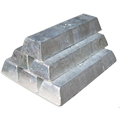
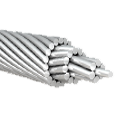

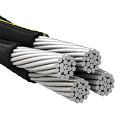
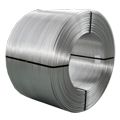
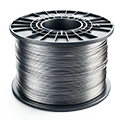
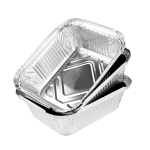








No comment